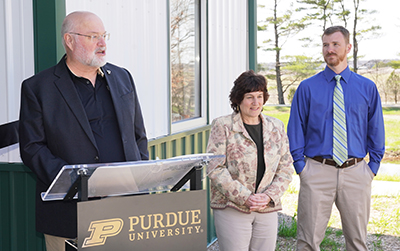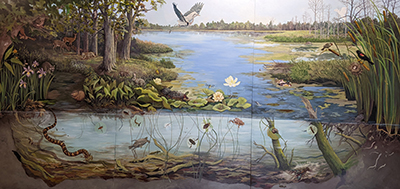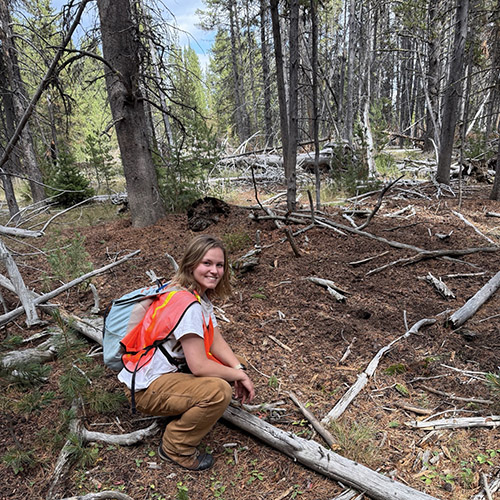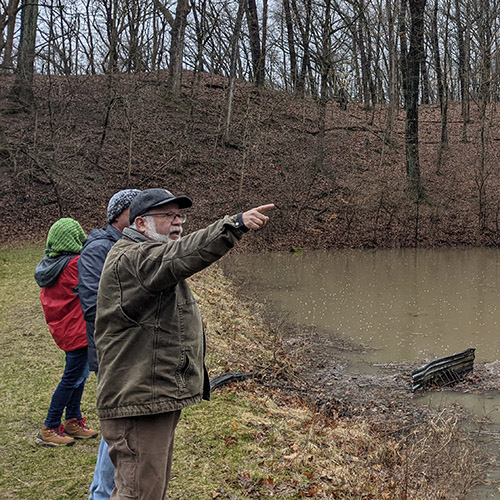FNR Dedicates Wildlife Ecology Research Facility
 The Purdue Department of Forestry and Natural Resources officially dedicated and opened the Wildlife Ecology Research Facility, or WERF, on April 15, with a ribbon-cutting ceremony and open house.
The Purdue Department of Forestry and Natural Resources officially dedicated and opened the Wildlife Ecology Research Facility, or WERF, on April 15, with a ribbon-cutting ceremony and open house.
The 4,700-square foot WERF building, which replaces the department's outdated Animal Care Building, which would have required extensive and costly repairs for continued usage, brings FNR's wildlife research facilities into the 21st century. The state-of-the-art facility greatly increases the department's capacity for wildlife-based research, and will allow researchers to answer many questions about the ecology, ecotoxicology and disease ecology for a wild array of wildlife species.
WERF was made possible by a $2 million contribution from the John S. Wright endowment and a generous $1 million donation fro the estate of 1950 alumnus Roger Voyles and his wife Sarah.
"The beauty of this facility is that the research rooms can be configured in a variety of ways to meet the needs of the project," said Dr. Jason Hoverman, chair of the WERF building planning committee.
The WERF building will only add to the possibilities of discovery in the natural resources field through a number of unique features.
- WERF greatly increases the amount of available space for research by providing six independently controlled rooms with a full range of environmental controls.
- Animal care rooms are specifically designed for flexibility of the occupants, both in the types of research (general and refined) and types of species (aquatic and terrestrial) that can be housed in the facility.
- WERF features a high-efficiency HVAC system with adjustable temperature and humidity controls in each room to customize the needs of individual research projects.
- Each research room is ventilated separately to prevent the spread of airborne pathogens as well as to isolate odors.
- Each research space also includes an entry vestibule where items can be prepared and assembled before moving into the secured lab area to allow researchers to work more efficiently.
- A large common space will provide for improved collaborations
- The building also will house equipment, supplies and other necessities to support outdoor research activities.
Attendees at the WERF Ribbon Cutting ceremony included the Glen W. Sample Dean of the College of Agriculture Karen Plaut and other college level dignitaries, the FNR building committee, and individuals related to the construction process, including representatives from general contractor Kettlehut Construction. The open house allowed FNR faculty, staff and students to become acquainted with the new research facility.
 In addition to the official opening of the building, those in attendance were greeted by a mural of a wetland ecosystem created by Gabriela Sincich. The mural depicts a fishless wetland ecosystem, much like what exists at the Purdue Wildlife Area property, including all of the wildlife that resides in and around it from insects and invertebrates to terrestrial and avian species. Sincich has been exhibiting her art across the globe since 1990, but working in West Lafayette since 2009.
In addition to the official opening of the building, those in attendance were greeted by a mural of a wetland ecosystem created by Gabriela Sincich. The mural depicts a fishless wetland ecosystem, much like what exists at the Purdue Wildlife Area property, including all of the wildlife that resides in and around it from insects and invertebrates to terrestrial and avian species. Sincich has been exhibiting her art across the globe since 1990, but working in West Lafayette since 2009.
A timelapse video of Sincich creating the mural as well as a video with Sincich about the process of creating the mural are below.






